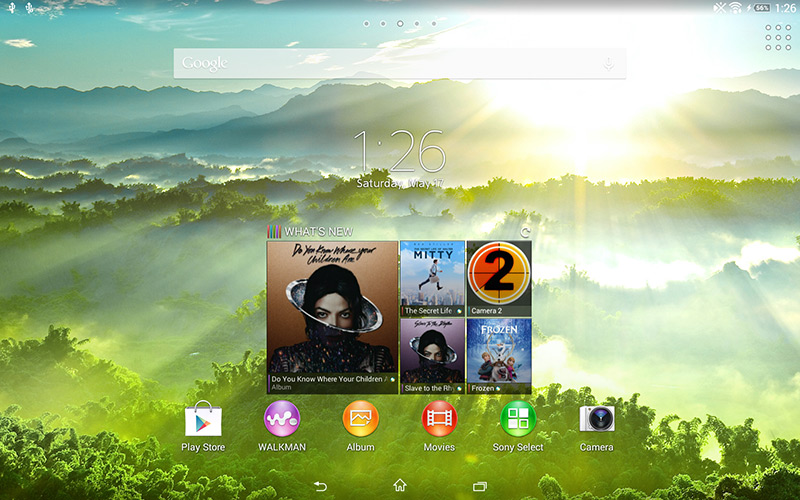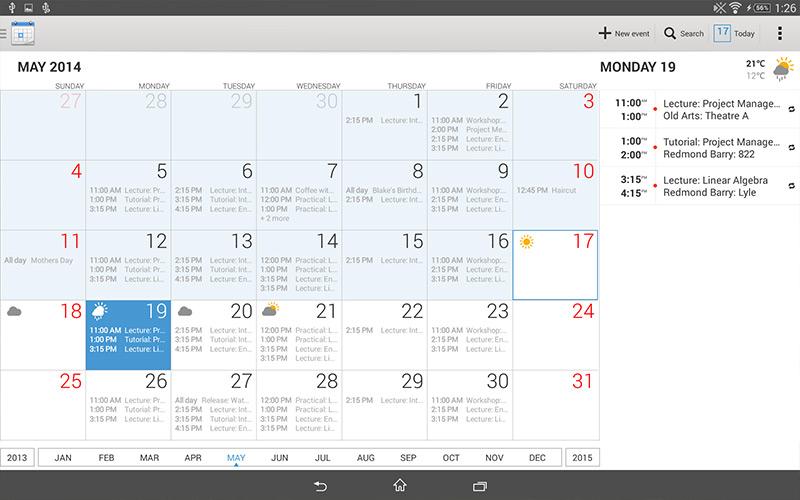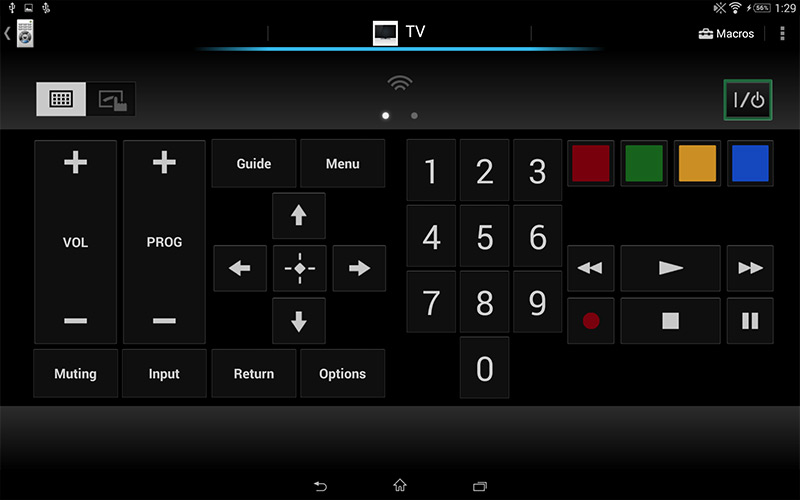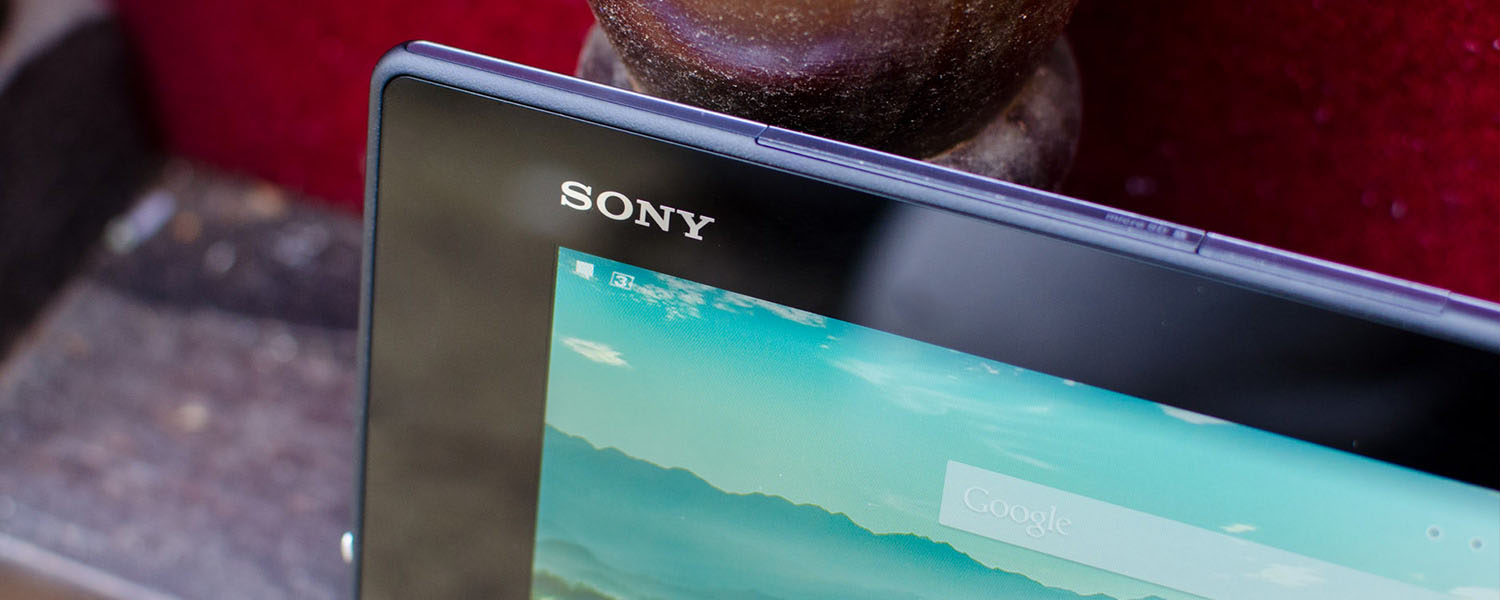Software, Camera
Out of the box, the Xperia Z2 Tablet is equipped with Android 4.4 and a custom Sony skin that's a tablet adaptation of their smartphone UI. There's nothing particularly exciting about this UI, and most of the features you're used to as part of Android on a tablet are relatively unchanged.

Of the areas Sony has changed, there's a nice lockscreen and a few okay homescreen widgets, but nothing really jumps out to me as being spectacular. The general design of Sony's skin is okay, but as usual I would prefer the visually-pleasant stock Android over skinning for the sake of skinning. As is typical for devices that have received an OEM software makeover, the design of the skin doesn't meld well with the remaining stock Android elements littered around apps such as Gmail.
The applications on the Xperia Z2 Tablet have basically the same features as the stock Android apps you'd find in a vanilla installation of Android 4.4, save for a few changes here and there. Of the features Sony has added - such as floating windowed apps (eg. calculator, calendar), 'Throw' for quick media streaming, and a few personalization options - nothing is especially new or interesting.

Sony has added some decent tablet applications to the Xperia Z2, such as Walkman and Album, both of which are improved, large-scale versions of their smartphone counterparts. The PlayStation app is also included to download and play some of Sony's exclusive games, while Sketch is a mediocre drawing application. And there's the usual array of bloatware such as Xperia Lounge, Sony Select, and What's New.
The remote control applications on the device, both Remote Control and TV SideView, are decent apps that use the IR LED functionality included in the tablet. Remote Control is a basic but usable app that can control many home theatre devices, while TV SideView provides a well-featured TV guide with social network integration.

The main problem I have with Android on a 10-inch tablet like the Xperia Z2 Tablet is that it's simply not compelling. Many applications, especially from big name developers, just don't function well or look nice on the large display, which has been an issue since Android for tablets launched several years ago. There's no killer, tablet-specific feature in Android either that makes it a better OS to use others, especially compared to Windows 8.1 which is flexible and versatile.
Basically this leaves Android without the great features of Windows, and without the great apps of iOS. I'm not saying that all apps are terrible, as it's certainly possible to find some gems and there's plenty of games available, but most developers either focus on the more popular 7- or 8-inch form factor, or develop fantastic iOS apps. It leaves Android on 10-inch tablets as an acceptable, but not outstanding software offering.
Camera
The camera on the back of Xperia Z2 Tablet is Sony's Exmor RS IMX134 sensor we previously saw in the Xperia Z Ultra. It's an 8-megapixel 1/4" CMOS sensor with 1.12 µm pixels, accompanied by an f/2.4 28mm-effective lens, and capable of 1080p30 video. On the front you'll find OmniVision's OV2720 1/6" 2-megapixel CMOS with 1.4 µm pixels, designed for HD video calls and selfies.
Tablets aren't typically a major source of photography, which is a good thing considering the Xperia Z2 Tablet's camera is mediocre except in the best of conditions. If you happen to be shooting a scene that's bright and sunny, the IMX134 will do a decent job of capturing the conditions with acceptable dynamic range, color saturation and contrast; but if it's not sunny, it's best to use the Z2 Tablet's camera sparingly.
Most of the issues shooting in cloudy, indoors or shadowed conditions revolve around poor white balance and a lack of color vibrancy. Photos of interesting subjects appear dull and boring when photographed by the Xperia Z2 Tablet in these conditions, with a distinct level of washing out. Inspecting full resolution crops reveals a passable level of crispness and clarity, although it's clear Sony is applying strong post-processing filters to clear up grain.
Like previous Sony devices, there's two main shooting modes: Superior Auto, and Manual. The former locks out most control and attempts to produce the best image by automatically applying scenes, white balance, ISO and more to a 16:9 cropped image. It tends to do a reasonable job with the tools at its disposal, although I'm not a huge fan of the widescreen-cropped 5-megapixel images when there's more of the sensor to be used.
In Manual mode you get greater control over your shots, although you can still set things to automatic mode if you choose. You don't get as much control as with recent HTC and Nokia smartphone cameras, but you are free to turn on HDR mode, and use the full 8-megapixel resolution of the camera. I typically shot most images with the Xperia Z2 Tablet in Manual mode.
Aside from general issues with the quality of the Z2 Tablet's camera, autofocus seems to struggle getting shots in focus, especially in a macro environment. This results in a lengthy delay from pressing the shutter button to image capture, as the camera has to hunt for the correct focus, and often missing entirely. It's a good thing this camera is used on a tablet, because it would be very frustrating on a smartphone.
As for low-light and night-time imagery, you can generally forget using the Xperia Z2 Tablet. Results are very grainy and overtly post processed, resulting in some truly bad photos. There's no flash either, so you can't illuminate scenes that would otherwise be far too dark for the camera to handle.








